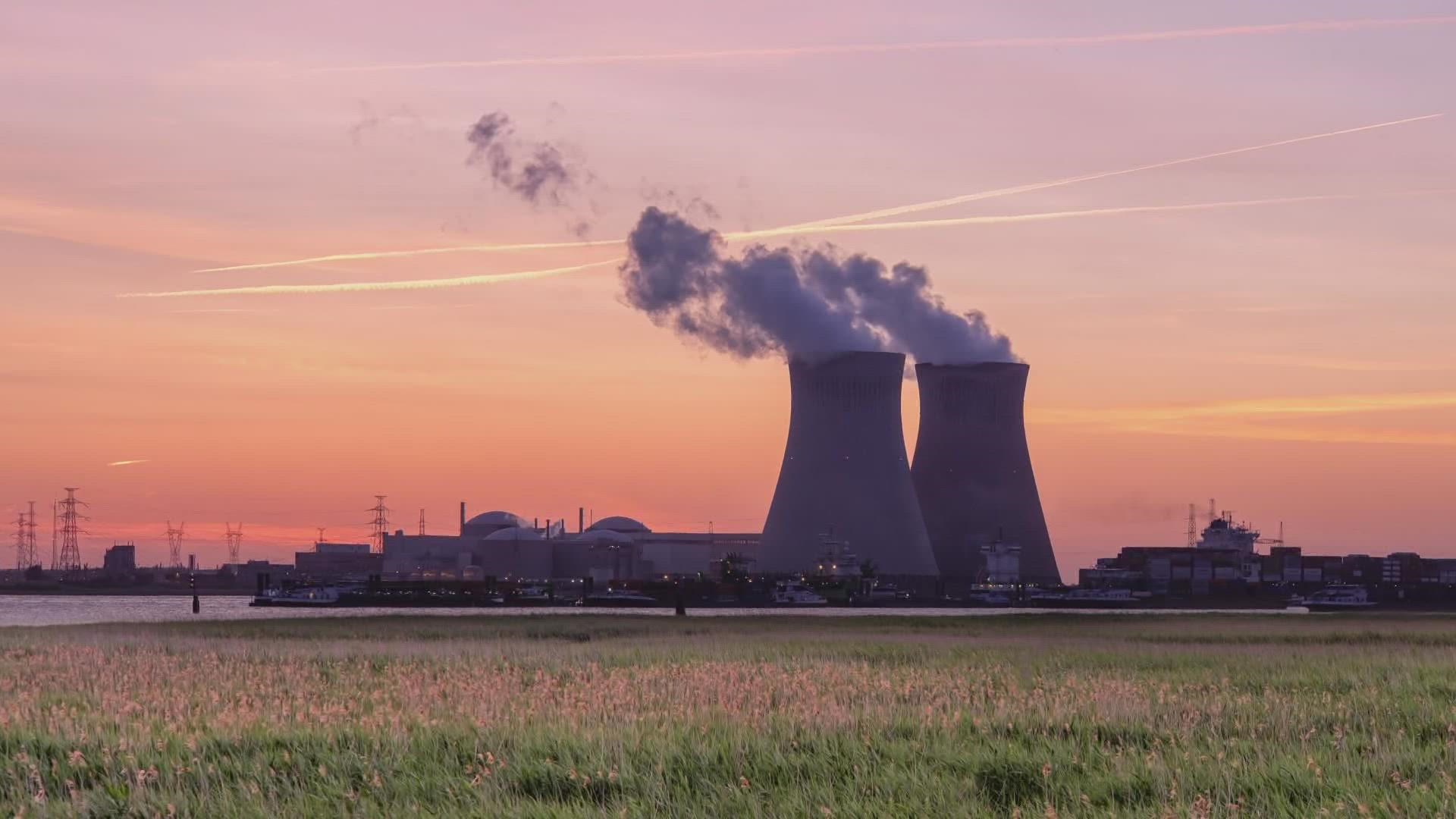PORTLAND, Maine — Scientists have known for decades that increased carbon dioxide in the atmosphere is leading to rapid warming of the planet. And with that knowledge there has been, in general, a push to switch from fossil fuels to more renewable sources of energy, such as wind, solar, and hydro.
But there’s an internal debate among scientists you may not have heard about. Should nuclear energy be included in our green energy plan? Or, more specifically, is more nuclear energy needed to bridge the gap between fossil fuels and a fully reliable renewable energy grid?
According to Steve Clemmer, director of energy research at Union of Concerned Scientists, it is probably wise to continue with at least the current nuclear output.
“We believe that a least existing nuclear power plants could play an important near term role in addressing climate change as we accelerate wind and solar to replace coal and natural gas," Clemmer said. "Those fossil fuels, coal, and natural gas provide about 60 percent of country’s electricity currently, so we have a big task in front of us just to get rid of those sources to decarbonize the power supply.
"Nuclear power provides about 20 percent of our electricity and about half of the country’s zero-carbon electricity," he continued. "If we retire existing nuclear power plants before their licenses expire, that could result in an increase in fossil fuel and emissions and make it much more difficult to achieve our climate goals.”
It’s important to grasp the amount of power nuclear plants can deliver and with a very low carbon footprint. For example, one 1,100 megawatt nuclear power plant produces roughly the same amount of electricity in its 60-year lifespan as 2,000 wind turbines over their lifetime. That’s a big number. So why has nuclear energy output all but stalled in the United States? As with most things, it’s all about the Benjamins.
“Because some plants, not all plants, have been losing money and one of the biggest risks was low natural gas prices, which, as you know, in the last year or two especially, as the result of the war in Ukraine, natural gas and oil prices have gone up, so that has made nuclear power plants more profitable because they can sell their power into the market and make more money," Clemmer said. "Prior to that, natural gas prices were at historic lows for a number of years mostly because of the fracking boom in the United States, and so that made it difficult for some nuclear power plants to compete.”
Even if fossil fuel commodities stay elevated in price, leveling the playing field on cost, is building new nuclear power plants feasible?
Consider that there are only two nuclear power plants being built in the United States, with more scheduled to be retired than built in the next decade.
Speaking of years, that’s part of the problem.
A nuclear plant typically takes 10 to 15 years to construct, from planning to operation. Given the pressing need to decarbonize quickly, that might be too slow.
And then, of course, there’s the issue of location. Will Americans be in a hurry to have a new nuclear plant in their backyard?
Jonathan Rubin from University of Maine School of Economics points out this underlying issue.
“I think siting of public assets, either wind turbines or nuclear plants or wastewater treatment plants, all these things they may be privately owned or publicly owned, but they serve a public good in some sense," Rubin said. "Those are really challenging things, and I don’t know if it’s possible to site a new one.”
So existing nuclear power plants likely have a role in our transition from fossil fuels to renewables, but it’s far from the silver bullet.

